Within the core of your tooth lies the pulp, a vital tissue composed of blood vessels that contribute to the development of the surrounding tooth structure. Infections in the pulp can arise from various causes such as trauma, significant decay, or cracks and chips, as well as from the stress of repeated dental treatments. Signs of an infected pulp include noticeable damage or swelling of the tooth, temperature sensitivity, or discomfort in the tooth and surrounding gum tissue.
Should you exhibit any of these indicators, it is likely that your dentist will propose a non-surgical approach to remove the affected pulp. The process entails the extraction of the compromised pulp, followed by a thorough cleaning and sealing of the root canal system. Typically, this treatment is performed under local anesthesia and might require multiple visits, depending on the complexity of the treatment needed. About 90% of these treatments successfully preserve the tooth. If, however, your tooth cannot be treated endodontically or if the prognosis is not positive, you will be notified either during your initial consultation or if any issues arise during or subsequent to the treatment. Local anesthesia is utilized to ensure comfort, and nitrous oxide sedation is available if needed. Post-treatment, you should be capable of driving yourself home and resuming your daily activities with minimal to no discomfort.
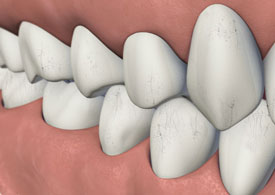
Craze lines are minute fractures that exclusively affect the tooth’s outer enamel layer. These fine cracks are more frequently observed in adults and are considered superficial. Typically, craze lines do not pose any significant health concern as they are limited to the enamel and do not impact the tooth’s internal structure or integrity.
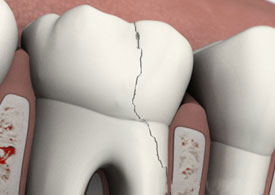
A fractured cusp occurs when a tooth’s ridge breaks due to wear or impact. Typically, this doesn’t harm the tooth’s pulp, and root canal treatment isn’t necessary. A dentist often restores the tooth’s shape and functionality with a crown.
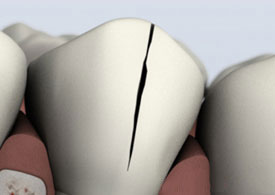
This crack starts on the chewing surface and may extend towards or into the root, often damaging the pulp. Root canal treatment is usually required. Without treatment, the condition could worsen, risking tooth loss. Early detection and treatment are critical.
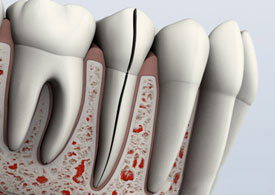
A split tooth typically evolves from a cracked tooth that hasn’t been treated. It’s characterized by a crack that has developed into distinct parts, making it impossible to preserve the tooth in one piece. However, whether any part of the tooth can be saved depends on the crack’s location and severity. In some cases, a combination of endodontic retreatment and dental restoration might salvage a portion of the tooth.
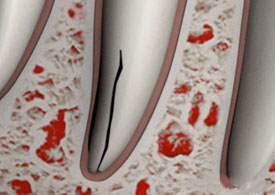
Vertical root fractures start at the root and work their way up towards the tooth’s chewing surface. Often presenting with few symptoms, they can easily go undetected. Treatment might involve endodontic surgery to save a part of the tooth by removing the fractured segment. If saving the tooth isn’t feasible, extraction becomes necessary.
Procedures
Instructions
Avondale AZ | Phoenix AZ | Sun City AZ | Litchfield Park AZ | Tolleson AZ | Citrus Park | Youngtown AZ | Glendale AZ | Peoria AZ
Copyright © 2024 Avondale Endodontics. All rights reserved | Privacy Policy | Sitemap
Website & Marketing by Best Dental SEO